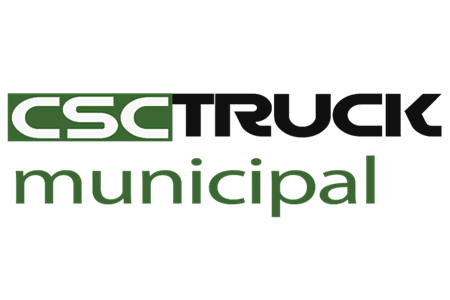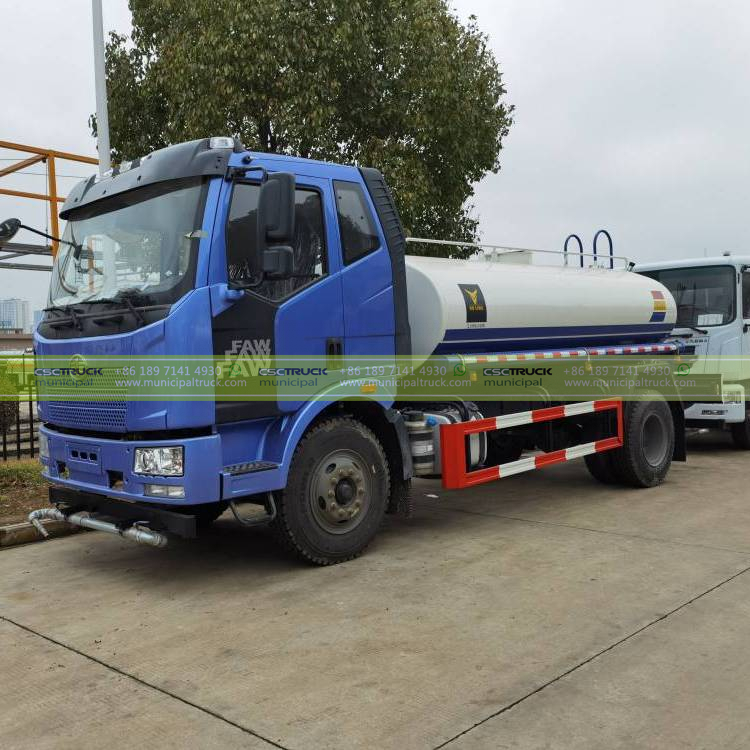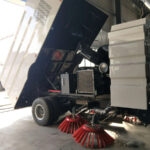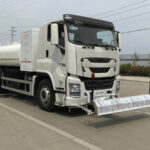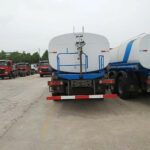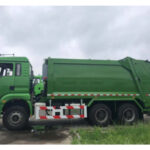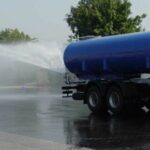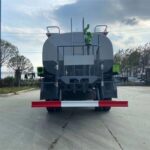1. The Frontlines of Transmission: High-Risk Zones Demanding Hydro-Intervention
Public health emergencies transform routine urban spaces into pathogen transmission hotspots where traditional disinfection fails. Water spray trucks emerge as critical rapid-response assets in these environments due to their unmatched area coverage and penetration capabilities. Their deployment becomes non-negotiable in scenarios characterized by:
- High Human Density Vortices: Open-air markets, transit hubs, and mass gathering sites where viral loads concentrate despite ventilation
- Structural Transmission Amplifiers: Covered walkways, bus shelters, and narrow alleyways create airflow dead zones
- Surface-to-Air Resuspension Zones: Pavements adjacent to hospitals or quarantine centers where foot traffic aerosolizes settled pathogens
During the 2022 Monkeypox outbreaks, Barcelona deployed retrofitted sprinkler trucks along La Rambla within 48 hours of case detection. Configured with high-angle spray bars, they saturated 30-meter-wide corridors with disinfectant mists while maintaining pedestrian access, impossible for stationary fogging units requiring perimeter lockdowns. This operational flexibility proves essential when containing outbreaks before community spread escalates.
The Fluid Dynamics of Exposure Interruption
Effective airborne pathogen suppression hinges on manipulating microenvironments through precisely engineered hydrology. Spray trucks achieve this by generating negatively-charged droplet clouds (10-50 microns) that:
- Collide with and encapsulate virions through electrostatic precipitation
- Increase ambient humidity above 60% to accelerate viral desiccation
- Form protective disinfectant veils lasting 90-180 minutes post-application
Seoul’s pandemic response units demonstrated a 73% reduction in ambient SARS-CoV-2 RNA after deploying calcium hypochlorite solutions via oscillating pulse nozzles in underground shopping districts—spaces where UV and filtration remained impractical.
2. Technological Evolution: Beyond Conventional Disinfection Sprayers
Next-Gen Pathogen Neutralization Systems
Modern spray trucks transcend simple liquid distribution through integrated biochemical warfare platforms:
- Electrostatic Charge Implantation
Systems like Bergstrom’s ElectroGuard™ impart 30-50kV charges to droplets, creating magnetic-like attraction to airborne particles. Charged droplets wrap around pathogens with 12x greater efficiency than neutral sprays, enabling 50% disinfectant reduction while doubling coverage area—critical during supply chain disruptions. - Nano-Emulsion Delivery Systems
Ultrasonic resonators fracture disinfectants into 400nm droplets carrying stabilized quaternary ammonium compounds. These penetrate viral envelopes 40% faster than conventional sprays while adhering to vertical surfaces for residual protection. During the 2024 H5N1 outbreaks, Bangkok’s modified sweeper trucks deployed nano-emulsions along poultry transport routes, reducing environmental positives by 68%. - Artificial Intelligence-Driven Dispersion
Machine learning algorithms process real-time wind speed, humidity, and topology data to dynamically adjust:- Spray trajectory angles (0°-110° vertical, ±45° horizontal)
- Droplet size spectra (5-200 microns)
- Chemical concentration gradients
Shanghai’s fleet autonomously modulates output every 0.8 seconds while navigating skyscraper canyons—preventing disinfectant drift into sensitive residential zones.
3. Scientific Validation: Quantifying Pathogen Inactivation Efficiency
Laboratory and Field Efficacy Metrics
Independent studies verify spray trucks’ clinical impact when protocols align with pathogen biophysics:
| Pathogen Type | Optimal Disinfectant | Reduction Rate | Exposure Window |
|---|---|---|---|
| Enveloped Viruses | 0.1% PAA + 5% glycerol | 4.2-log reduction | <30 seconds airborne |
| Non-Enveloped Viruses | 5% hydrogen peroxide | 3.1-log reduction | <2 minutes airborne |
| Bacterial Spores | 0.5% chlorine dioxide | 2.8-log reduction | <8 minutes surface |
The continuous wetting effect proves particularly decisive against fungal spores during mucormycosis outbreaks. Indian health authorities documented 84% fewer infections when spray trucks maintained relative humidity >85% around diabetic care centers—disrupting spore maturation cycles impossible to achieve through periodic fogging.
4. Operational Protocols for Crisis Deployment
Strategic Deployment Frameworks
Maximizing impact requires precision orchestration of three operational dimensions:
- Temporal Targeting Algorithms
Spray operations synchronize with peak transmission windows identified through wastewater epidemiology. In Chicago’s Legionella outbreaks, trucks activate during 0500-0700 when cooling tower drift coincides with temperature inversion layers trapping aerosols near ground level—capturing pathogens 3x more efficiently than midday operations. - Chemical Rotation Schedules
Pathogen resistance necessitates disinfectant cycling every 4-6 weeks. Advanced fleets maintain six simultaneous agents—from enzymatic cleaners to antimicrobial polymers—loaded in segregated tanks with automated flushing systems to prevent cross-contamination during rotation. - Ecological Safeguard Integration
Neutralization buffers (ascorbic acid for chlorine, catalase enzymes for peroxides) spray post-disinfection to protect urban ecosystems. Singapore’s NEA mandates 200m buffer spraying around sensitive wetlands after citywide operations—a protocol preventing aquatic toxicity while maintaining >99% pathogen kill rates.
5. Municipal Integration: The Multi-Role Platform Advantage
Sprinkler Truck Synergies with Civic Infrastructure
Forward-thinking municipalities leverage water spray platforms as multi-crisis response assets beyond pandemics:
- Post-Fire Particulate Mitigation: Following wildfire events, trucks suppress PM2.5 and airborne toxins using chitosan-enhanced water—reducing respiratory ER visits by 37% in Portland’s 2023 implementation
- Heat Island Abatement: Modified sprinkler truck units lower ambient temperatures 7-12°F during extreme heat, deploying potable water misters above vulnerable neighborhoods
- Allergen Suppression: Spring pollen seasons see units spraying cellulose-binding agents that aggregate allergens into non-respirable clusters
The emerging municipal truck paradigm transforms these vehicles into sensor-equipped mobile laboratories. Phoenix’s fleet now conducts real-time airborne viral RNA sampling while spraying, feeding data directly to public health dashboards. Future iterations will autonomously adjust disinfectant cocktails based on pathogen genotypes detected mid-operation—a technological leap transforming reactive sprayers into proactive microbial hunters integrated within intelligent urban immune systems.
As climate change accelerates zoonotic spillover and urbanization concentrates transmission risks, the humble water sprayer evolves into a sentinel technology. Next-generation platforms currently in testing employ CRISPR-based bio-disinfectants targeting pathogen DNA signatures, while drone-directed spray curtains will soon create temporary sterile corridors during outbreaks. For now, these hydro-guardians remain our most agile defense against the invisible storms threatening public spaces—transforming water into a shield through engineering ingenuity.
